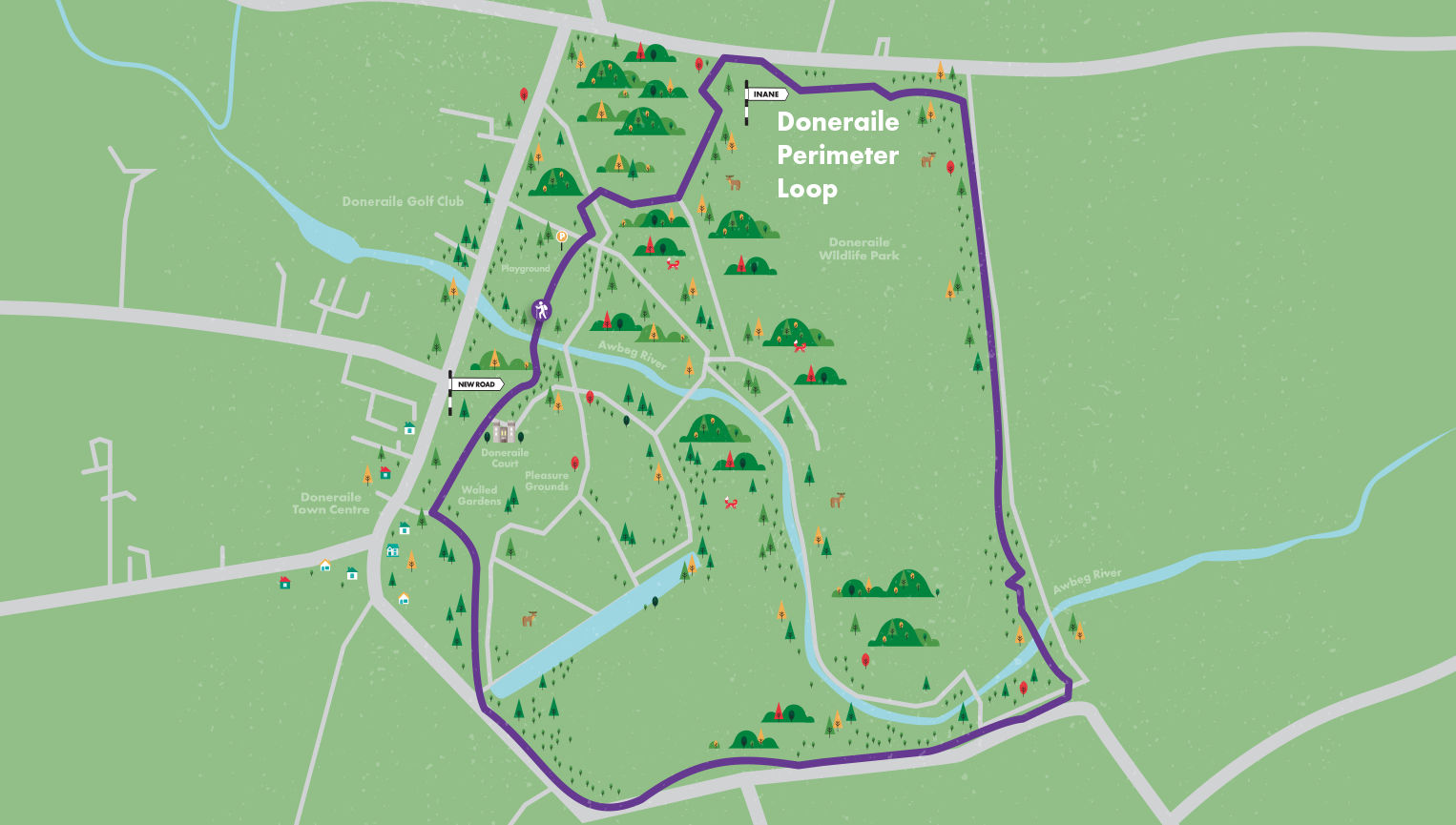Doneraile Estate and Wildlife Park
- Wildlife Park
- Estate
- Garden
- Heritage
- Doneraile, Co. Cork
In 1825 the 3rd Viscount Doneraile (second creation) commissioned the Orangery, a nine bay single storey building known in style as Strawberry Gothic. Indeed there was a family tradition of each member contributing in some measure to the presentation and delight of the Pleasure Grounds and gardens. Over a 28-year period Lady Doneraile (May), the Viscount’s daughter-in-law, in communication with the Director of Kew, William Jackson Hooker received many exotic plants. The ornamental pool was used to maintain high humidity for such plants as orchids, rhododendrons and ferns.
- Pleasure Grounds:
Historically, the pleasure grounds extended to
approximately 15 acres and would have included a woodland garden,
or Forest Garden, whale bone arch and Cottage Ornee. In 1810 the
Reverend Horatio Wilson remarks that “Nor are the present noble
owners of this truly beautiful residence less indebted to his consort,
[3rd Consort], the late Lady Doneraile, a woman of most superior
understanding, whose taste and judgement were happily directed to
the embellishment of the pleasure grounds.”
The pleasure grounds as we see it today, would have been laid out in the nineteenth century and would have included 6 large mixed borders of ornamental planting along with 8 cubes of Evergreen Quincox’s, five hedging plants grown to form a large cube. This would have been a private area for the owners to spend their leisure time and host parties. The walls of the orangery are still standing and would have been used to grow some of the award winning flowers that were associated with Lady Castletown. - Entry to the Parterre Garden: The parterre Garden is an intricate pattern of Box-Hedging as the focal point. On the South-facing walls is still the footings of an old glasshouse that would have been used to grow tender varieties of fruits, like peaches or nectarines.
- The Pinery-Vinery was a three-partitioned glass house that was used for growing Pineapples & grapes for the house. The vines were grown with their roots outside and the stems pulled into the glass house to be trained up wires, where they provided shade for the pineapples. If you look closely, there is still a hole in the wall where the rods would have been pulled into the glass house. The pineapple was long associated with luxury & opulence, as well as a display of the gardener’s skill.
- The American Garden: Planting in the American Garden was mostly ornamental to display the recent discoveries from ‘The New World’. The only survivor from this era is a Catalpa bignonioides (Indian Bean Tree) that is leaning over in the garden. The Northern wall would have been ‘flued’ or heated to increase the yield of more tender crops and protect the tender crops from late spring frosts. The Hot wall was also an insurance policy to guarantee a crop if the temperatures dropped drastically. A fire was lit on the rear side of the wall and the heat travelled through the cavities in the wall and the red brick would have retained the heat for a longer period.
- Walled Garden: The ‘Top Garden’ was also part of the nineteenth century improvements to the wider estate. The current glass house structure that stands is dated from 1907, but prior to this there would have been a double span glass house erected. Later on, this garden became an important revenue stream for Lady Castletown, growing foliage, fruit & flowers for markets to supplement the income of the estate.
Doneraile Wildlife Park East Loop is a 2.3 kilometer lightly trafficked loop trail located near Doneraile, County Cork, Ireland that offers the chance to see wildlife and is good for all skill levels. The trail is primarily used for walking, nature trips, and bird watching.
Doneraile Wildlife Park Perimeter Loop is a 5.1 kilometer lightly trafficked loop trail located near Doneraile, County Cork, Ireland that offers the chance to see wildlife and is good for all skill levels. The trail is primarily used for hiking, walking, nature trips, and bird watching.








